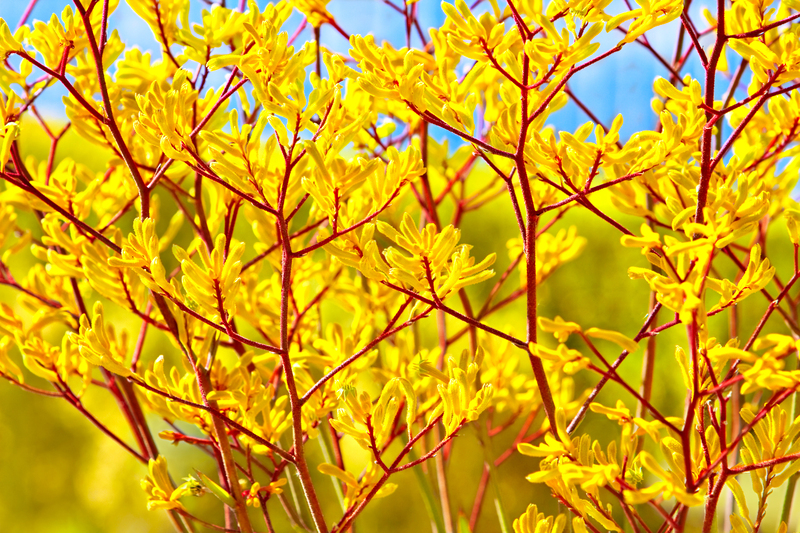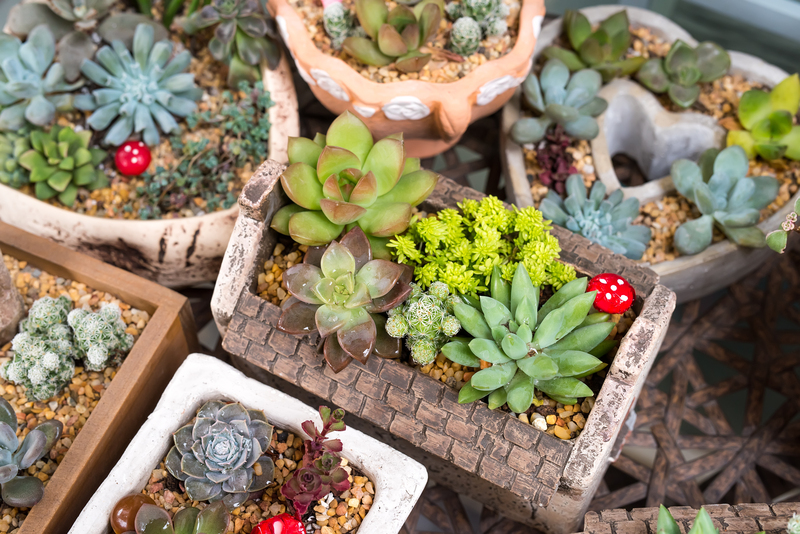9 Vibrant Ground Covers to Enrich Your UK Garden
Posted on 15/05/2025
Introduction to Vibrant Ground Covers for Your UK Garden
When transforming your UK garden, ground covers can play a pivotal role. These vibrant, low-growing plants not only enhance the aesthetic appeal but also provide practical benefits like reducing weeds and stabilizing soil. Whether you're looking to fill gaps between stepping stones or create a lush, green carpet, ground covers can complement your garden's existing beauty. Below, we present nine vivid ground covers that are perfect for enriching any British garden.

The Appeal of Ground Covers
Before delving into specific plant options, it's essential to understand why ground covers are valuable. These plants offer a blend of aesthetics and utility. They can add stunning splashes of color, pleasing textures, and in some cases,
- functional advantages
- Erosion control: Their dense growth helps in binding the soil.
- Weed suppression: By overshadowing weeds, they naturally limit their growth.
- Low maintenance: Most ground covers require minimal care once established.
Nine Ideal Ground Covers for UK Gardens
1. Creeping Thyme (Thymus serpyllum)
A delightful addition to any garden, creeping thyme is known for its aromatic foliage and charming purple flowers. It's perfect for planting between pavers or along pathways. Thriving best in full sun, it's a hardy choice that's not only beautiful but also excellent for butterfly and bee habitats.
2. Sweet Woodruff (Galium odoratum)
This shade-loving ground cover is ideal for woodland gardens. With its white, star-shaped flowers and fragrant leaves, sweet woodruff offers a refreshing scent and vibrant texture. It's perfect for areas under trees or shaded spots that need a touch of elegance.
3. Bugleweed (Ajuga reptans)
Known for its spiky blue flowers and bronze foliage, bugleweed is a vigorous grower that can cover large areas quickly. Ideal for areas that transition between sun and shade, this ground cover adds a dramatic flair to your garden with its bold colors.
4. Vinca Minor (Periwinkle)
Vinca minor, commonly known as periwinkle, boasts glossy green leaves and blue-purple blooms. Its evergreen nature ensures that it retains a vibrant look year-round. Suitable for a variety of conditions, from sun to shade, it's a reliable choice for consistent ground cover.
5. Golden Creeping Jenny (Lysimachia nummularia 'Aurea')
This golden-hued beauty is perfect for brightening up any garden corner. Golden creeping Jenny thrives in moist conditions, making it ideal for areas with water features or damp spots. Its trailing stems create a cascade of lush foliage that adds warmth and vibrancy.
6. Heuchera (Coral Bells)
With their colorful leaves ranging from deep purple to caramel, heucheras are as functional as they are stunning. While they prefer partial shade, they can adapt to various light conditions, making them versatile. Coral bells not only serve as effective ground covers but also add a splash of seasonal interest with their airy flower spikes.
7. Sedum (Stonecrop)
For those looking for a drought-resistant option, sedum might be the perfect choice. With its succulent leaves and starry flowers, sedum adds a unique texture to rock gardens and dry areas. Its ability to thrive in poor soil conditions makes it a hardy and resilient option for various UK climates.
8. Pachysandra Terminalis
Pachysandra is a reliable evergreen ground cover perfect for shaded areas. With its lush, dark green foliage and small white blooms, it creates a thick carpet that remains vibrant throughout the year. Ideal for underplanting in wooded areas, it's superb for maintaining greenery during colder months.
9. Saxifraga (Rockfoil)
Saxifraga, commonly known as rockfoil, offers an adaptable option that can thrive in rocky or alpine gardens. Its delicate rosettes and bright star-shaped flowers add a touch of whimsy. Perfect for crevices and rocky outcrops, it's a great choice for adding interest and diversity to your garden's terrain.

Caring for Your Ground Covers
Ensuring healthy growth for ground covers involves understanding their specific needs. Here are some general tips:
- Soil preparation: Most ground covers thrive in well-drained soil. Amending the soil with organic matter can enhance quality and drainage.
- Watering: Young ground covers often require regular watering. Once established, their water needs may decrease, especially for drought-tolerant varieties like sedum.
- Pruning: Occasional trimming helps maintain shape and encourages denser growth.
- Fertilization: Use a balanced fertilizer during the growing season for best results.
Conclusion
Incorporating these vibrant ground covers can transform your UK garden into a lush, colorful paradise. By understanding their unique characteristics and care requirements, gardeners can benefit from their functional and aesthetic advantages. Whether you're aiming for a burst of color or a practical solution to erosion, these nine selections offer something for every garden enthusiast.
Embrace the beauty and utility of ground covers to add depth, texture, and vibrancy to your landscape, ensuring year-round beauty in your outdoor space.

